#during the reign of Ibn al
Explore tagged Tumblr posts
Text
Islamic arts: Western Islamic art: Moorish.. The palace and grounds!!

The Alhambra is situated in a locale of rare natural beauty. The plateau upon which it was built overlooks the Albaicín (Albayzin) quarter of Granada’s Moorish old city. At the base of the plateau, the Darro River flows through a deep ravine on the north. The park outside the palace (Alameda de la Alhambra) was planted by the Moors with roses, oranges, and myrtles. Its most characteristic feature, however, is the dense wood of English elms brought there in 1812 by the duke of Wellington during the Peninsular War.
#Built on a plateau overlooking the city of Granada#the Alhambra was constructed primarily between 1238 and 1358#during the reign of Ibn al#during the reign of Ibn al-Aḥmar#founder of the Naṣrid dynasty#and his successors. The splendid decorations of the interior are attributed#and his successors. The splendid decorations of the interior are attributed to Yūsuf I (died 1354).
13 notes
·
View notes
Text
Abu al-Faraj al-Isfahani’s Kitab al-Aghani records the lives of a number of individuals including one named Tuways who lived during the last years of Muhammad and the reigns of the early Muslim dynasties. Tuways was mukhannathun: those who were born as men, but who presented as female. They are described by al-Isfahani as wearing bangles, decorating their hands with henna, and wearing feminine clothing. One mukhannathun, Hit, was even in the household of the Prophet Muhammad. Tuways earned a reputation as a musician, performing for clients and even for Muslim rulers. When Yahya ibn al-Hakam was appointed as governor, Tuways joined in the celebration wearing ostentatious garb and cosmetics. When asked by the governor if he were Muslim Tuways affirmed his belief, proclaiming the declaration of faith and saying that he observes the fast of Ramadan and the five daily prayers. In other words, al-Isfahani, who recorded the life of a number of mukhannathun like Tuways, saw no contradiction between his gender expression and his Muslimness. From al-Isfahani we read of al-Dalal, ibn Surayj, and al-Gharid—all mukhannathun—who lived rich lives in early Muslim societies. Notably absent from al-Isfahani’s records is any state-sanctioned persecution. Instead, the mukhannathun are an accepted part of society.
...
Far from isolated cases, across Islamic history—from North Africa to South Asia—we see widespread acceptance of gender nonconforming and queer individuals. - Later in the Ottoman Empire, there were the köçek who were men who wore women’s clothing and performed at festivals. Formally trained in dance and percussion instruments, the köçek were an important part of social functions. A similar practice was found in Egypt. The khawal were male dancers who presented as female, wearing dresses, make up, and henna. Like their Ottoman counterparts, they performed at social events.
- In South Asia, the hijra were and are third-sex individuals. The term is used for intersex people as well as transgender women. Hijra are attested to among the earliest Muslim societies of South Asia where, according to Nalini Iyer, they were often guardians of the household and even held office as advisors.
- In Iraq, the mustarjil are born female, but present as men. In Wilfred Thesiger’s The Marsh Arabs the guide, Amara explains, “A mustarjil is born a woman. She cannot help that; but she has the heart of a man, so she lives like a man.” When asked if the mustarjil are accepted, Amara replies “Certainly. We eat with her and she may sit in the mudhif.” Amara goes on to describe how mustarjil have sex with women.
...
Historian Indira Gesink analyzed 41 medical and juristic sources between the 8th and 18th centuries and discovered that the discourse of a “binary sex” was an anachronistic projection backwards. Gesink points out in one of the earliest lexicography by the 8th century al-Khalil ibn Ahmad that he suggests addressing a male-presenting intersex person as ya khunathu and a female-presenting intersex person as ya khanathi while addressing an effeminate man as ya khunathatu. This suggests a clear recognition of a spectrum of sex and gender expression and a desire to address someone respectfully based on how they presented.
Tolerance of gender ambiguity and non-conformity in Islamic cultures went hand-in-hand with broader acceptance of homoeroticism. Texts like Ali ibn Nasir al-Katib’s Jawami al-Ladhdha, Abu al-Faraj al-Isfahani’s Kitab al-Aghani, and the Tunisian, Ahmad al-Tifashi’s Nuz’ha al-‘Albab attest to the widespread acceptance of same-sex desire as natural. Homoeroticism is a common element in much of Persian and Arabic poetry where youthful males are often the object of desire. From Abu Nuwas to Rumi, from ibn Ammar to Amir Khusraw, some of the Islamic world’s greatest poets were composing verses for their male lovers. Queer love was openly vaunted by poets. One, Ibn Nasr, immortalizes the love between two Arab lesbians Hind al Nu’man and al-Zarqa by writing:
“Oh Hind, you are truer to your word than men. Oh, the differences between your loyalty and theirs.”
...
Acceptance of same-sex desire and gender non-conformity was the hallmark of Islamic societies to such a degree that European travelers consistently remarked derisively on it. In the 19th century, Edward Lane wrote of the khawal: “They are Muslims and natives of Egypt. As they personate women, their dances are exactly of the same description as those of the ghawazee; and are, in like manner, accompanied by the sound of castanets.”
A similarly scandalized CS Sonnini writes of Muslim homoerotic culture:
“The inconceivable appetite which dishonored the Greeks and the Persians of antiquity, constitute the delight, or to use a juster term, the infamy of the Egyptians. It is not for women that their ditties are composed: it is not on them that tender caresses are lavished; far different objects inflame them.”
In his travels in the 19th century, James Silk Buckingham encounters an Afghan dervish shedding tears for parting with his male lover. The dervish, Ismael, is astonished to find how rare same-sex love was in Europe. Buckingham reports the deep love between Ismael and his lover quoting, “though they were still two bodies, they became one soul.”
...
Today, vocal Muslim critics of LGBTQ+ rights often accuse gay and queer people of imposing a “Western” concept or forcing Islam to adjust to “Western values” failing to grasp the irony of the claim: the shift in the 19th and 20th century was precisely an alignment with colonial values over older Islamic ones, all of which led to legal criminalization. In fact, the common feature among nations with anti-LGBTQ+ legislation isn’t Islam, but rather colonial law.
Don't talk to me I'm weeping. I'm not Muslim, but the grief of colonization runs in the blood of every Global South person. Dicovering these is like finding our lost treasures among plundered ruins.
Queer folk have always, always been here; we have always been inextricable, shining golden threads in the tapestry of human history. To erase and condemn us is to continue using the scalpel of colonizers in the mutilation and betrayal of our own heritage.
#islam#queer muslims#queer history#lgbt history#colonization#colonialism#imperialism#world history#trans positivity#gay positivity#intersex positivity#queer poetry#queer love#queer art#islamic culture#lgbtqia#islamic history#global south#pinkwashing#islamphobia#colonial violence#queer erasure#arab culture#ottoman empire#hijra#wlw#mlm#knee of huss#same sex love#egyptian culture
786 notes
·
View notes
Text
🧵𝐍𝐨, 𝐈𝐭 𝐃𝐢𝐝𝐧’𝐭 𝐒𝐭𝐚𝐫𝐭 𝐨𝐧 𝐎𝐜𝐭𝐨𝐛𝐞𝐫 𝟕𝐭𝐡: 𝐂𝐞𝐧𝐭𝐮𝐫𝐢𝐞𝐬 𝐨𝐟 𝐉𝐞𝐰𝐢𝐬𝐡 𝐏𝐞𝐫𝐬𝐞𝐜𝐮𝐭𝐢𝐨𝐧 𝐢𝐧 𝐭𝐡𝐞 𝐌𝐢𝐝𝐝𝐥𝐞 𝐄𝐚𝐬𝐭.🧵
Thread: The idea that Arabs loved Jews until the creation of Israel is a widespread and untrue myth. Many believe that Jews were welcomed and lived peacefully among Arabs until the establishment of the modern state of Israel in 1948. This view is not only historically inaccurate but dangerously overlooks the long and painful history of Jewish suffering in the Middle East. Long before Zionism, Jews faced massacres, forced conversions, and expulsions in regions once ruled by the Arabs. In fact, Jews in the Arab world endured centuries of persecution under both Muslim and Ottoman rulers. Here’s a look at some of the most significant massacres and pogroms throughout this period, revealing the true story of Jewish life in the Middle East.

1. The Massacre of the Banu Qurayza (627 CE).
Long before Zionism, Jewish communities in the Middle East endured persecution, including one of the earliest and most harrowing incidents: the massacre of the Banu Qurayza in Medina during the time of the Prophet Muhammad.
The Banu Qurayza, a Jewish tribe in Medina, had entered into a pact with Muhammad under the Constitution of Medina, which allowed Muslims and Jews to coexist. However, during the Battle of the Trench, the tribe was accused of conspiring with Muhammad’s enemies, the Quraysh. After the Muslim victory, Muhammad and his forces besieged the Banu Qurayza’s fortress, forcing their surrender.
What followed was brutal. A tribunal led by Sa’d ibn Mu’adh sentenced all adult males of the tribe to death and enslaved the women and children. To determine who qualified as an “adult male,” boys were subjected to inspections for signs of puberty, specifically the presence of pubic hair. Those deemed adults were executed alongside the men. Historical sources, such as Ibn Ishaq and al-Tabari, report that between 600 and 900 men and boys were killed, their bodies dumped into trenches.
The Banu Qurayza’s women and children were sold into slavery, marking the total destruction of the tribe. This event illustrates the precarious and often deadly position of Jewish communities in the early Islamic period, long before the creation of Israel or the modern conflict in the region.
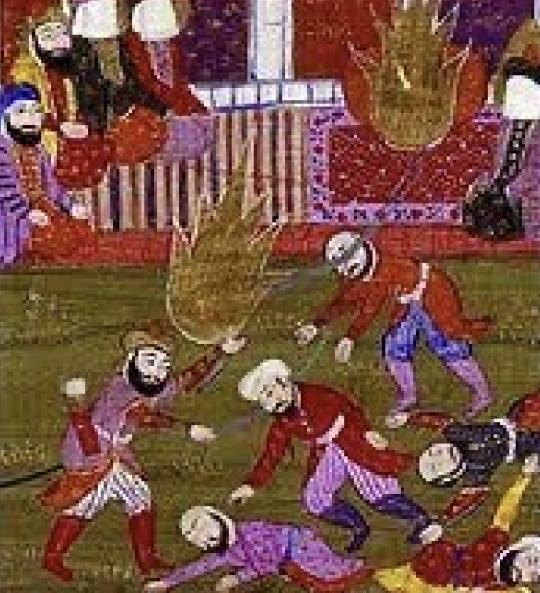
2/ Granada Massacre (1066) - Al-Andalus (Muslim Spain).
The first well-documented massacre of Jews in the Middle East dates back to 1066 in Granada, part of the Muslim-ruled Al-Andalus (Muslim Spain). After a Jewish vizier, Joseph Ibn Naghrela, was blamed for the death of the Muslim king, the situation escalated. A mob of Muslims, inspired by rumors and political tension, attacked the Jewish population of Granada. Over 4,000 Jews were slaughtered in a brutal pogrom that saw entire families butchered, their homes looted, and their properties destroyed. This massacre was part of a larger pattern of Jewish scapegoating across Muslim-ruled territories during periods of political instability. The massacre marked a turning point for Jews in the Iberian Peninsula, with many fleeing to other parts of the Muslim world for safety.

3/ The Persecution of Jews in Yemen: 1165 to 1679
The Jewish community in Yemen endured centuries of brutal persecution, systemic discrimination, and forced displacement, with two particularly devastating events defining their history before modern Zionism.
In 1165, during the reign of the Muslim leader Abd-al-Nabi ibn Mahdi, Yemen’s Jews faces an ultimatum: convert to Islam or face death. This period marked one of the earliest recorded instances of mass violence against Yemeni Jews. Synagogues were destroyed, and Jewish religious practices were outlawed. While some Jews fled or were forcibly converted, others were massacred for refusing to abandon their faith. This event signified the precarious existence of Jews in Yemen, where tolerance depended on the ruler’s whims.
Centuries later, in 1679, the Yemeni Jewish community faced an even more catastrophic event known as the Mawza Exile. Under the rule of Imam Al-Mahdi Ahmad, all Jews were expelled from their homes and forced into the barren Mawza desert. The journey itself claimed thousands of lives due to starvation and disease. Those who survived the desert exile were not allowed to return to their homes for several years, and when they did, they found their properties confiscated and their communities decimated. This period permanently weakened the Jewish presence in Yemen.
Throughout these centuries, Yemeni Jews were subjected to the degrading status of dhimmi under Islamic law, requiring them to pay exorbitant taxes, wear distinctive clothing, and accept legal and social inferiority. Forced conversions, kidnappings, and violent riots were regular occurrences. Despite these challenges, the community persisted, holding on to their traditions and faith until most were ultimately forced to leave Yemen in the mid-20th century.


4/ The Safed Attacks (1517).
In 1517, following the Ottoman conquest of the Levant from the Mamluks, chaos erupted in the city of Safed, one of the holiest cities in Judaism. The transition of power unleashed lawlessness, and Jewish communities became an easy target for violence.
Led by rogue Ottoman soldiers and local mobs, the attacks on Safed’s Jews were devastating. Homes and synagogues were looted and burned, and many Jews were brutally murdered. The violence displaced much of Safed’s Jewish population, forcing survivors to flee to neighboring areas.
Safed had been a center of Jewish learning and spirituality, with a thriving community. The attacks disrupted this flourishing cultural hub and instilled fear among Jews living in Ottoman-controlled lands. This event was one of the earliest indications that even under the Ottomans, Jewish communities would face intermittent violence and persecution, often fueled by local unrest and anti-Jewish sentiment.
The Safed Attacks of 1517 were a sad reminder of how quickly Jewish communities could become scapegoats during periods of political upheaval, long before modern Zionism or the establishment of Israel.
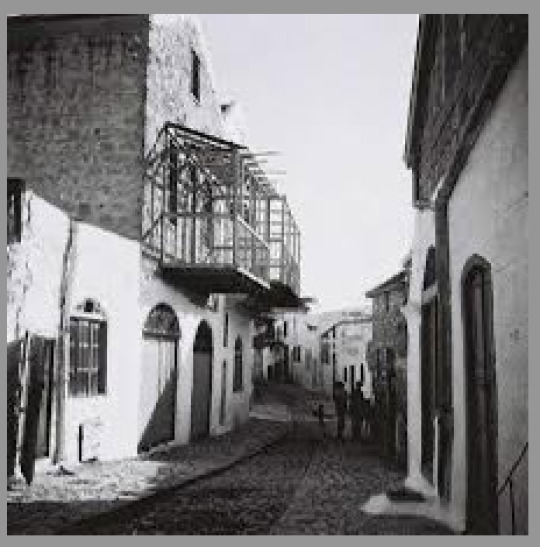
5/ The Tripoli Pogrom (1785).
In 1785, the Jewish community of Tripoli, Libya, endured a catastrophic pogrom instigated by Ali Burghul, an Ottoman officer who temporarily seized power in the region. After overthrowing the ruling pasha, Burghul wanted to consolidate his rule by targeting the city’s vulnerable minorities, particularly Jews.
The violence against Jews was brutal and systematic. Jewish homes and businesses were looted, synagogues were desecrated, and many Jews were tortured or killed. The pogrom decimated the Jewish quarter of Tripoli, leaving countless families homeless and destitute.
While Burghul’s regime lasted less than a year, the damage to the Jewish community was profound and long-lasting. Survivors faced the daunting task of rebuilding their lives amidst persistent discrimination and insecurity. This pogrom was a stark reminder of the precarious existence of Jews in North Africa, where they were often targeted during periods of political upheaval.
The Tripoli Pogrom of 1785 shows you again, the centuries-long persecution faced by Jews in Arab lands, well before the emergence of modern Zionism or the creation of Israel.

6/ The Baghdad Pogrom (1828).
In 1828, the Jewish community in Baghdad, Iraq, was subjected to one of the most devastating anti-Jewish pogroms in Ottoman-controlled Iraq. Tensions between Jews and Muslims had been rising due to a combination of economic envy, political instability, and increasing religious intolerance.
The pogrom began when a prominent Muslim figure, incited by local political and economic disputes, spread false accusations against the Jews of Baghdad. Jews were blamed for a series of issues, including alleged economic exploitation and religious violations, though no evidence supported these claims.
A violent mob quickly assembled, attacking Jewish homes, shops, and synagogues. Many Jews were beaten, and several were killed in the streets. Property was looted, and entire neighborhoods were set on fire. The violence lasted for several days, and it is estimated that several dozen Jews were killed, with many more injured or left destitute.
The pogrom also resulted in mass destruction of Jewish religious and cultural landmarks in Baghdad, severely damaging the local Jewish community’s infrastructure. This event left lasting scars on the Jewish population, contributing to a growing sense of insecurity and vulnerability. While the situation temporarily improved, the event remained a painful chapter in the history of Jewish life in Iraq.
The Baghdad Pogrom of 1828 showed how easily Jews were targeted and scapegoated in times of political and religious tension, long before the rise of modern Zionism or the establishment of Israel.

7/ The 1838 Safed Pogrom.
The second major pogrom in Safed, occurring in 1838, further demonstrated the uncertain position of Jews in the region during Ottoman rule. This wave of violence took place during the Egyptian-Ottoman War, as Ibrahim Pasha’s Egyptian forces temporarily controlled Israel. When Ibrahim’s forces retreated from Safed, local Arab mobs, emboldened by the chaos and lack of authority, turned their fury on the city’s Jewish population.
Over several days, armed bands ransacked Jewish homes, robbed businesses, and desecrated synagogues. Entire families were beaten and humiliated, while women and children were subjected to horrifying abuse. Many Jews fled to the surrounding hills for safety, living in caves or shelters with little food or water, while those who remained in the city faced murder or severe physical violence.
The Ottoman authorities did little to restore order or protect the Jewish residents. The aftermath of the pogrom left the Jewish quarter of Safed devastated, with entire families displaced and ancient synagogues reduced to ruins. Survivors recounted harrowing stories of betrayal by neighbors who joined in the looting and violence. The 1838 pogrom was a traumatic event that further destabilized the already struggling Jewish community in Safed, leading many to consider emigration.
The recurring violence in Safed was a reminder of the vulnerability of Jewish communities in Israel long before the modern Zionist movement emerged.
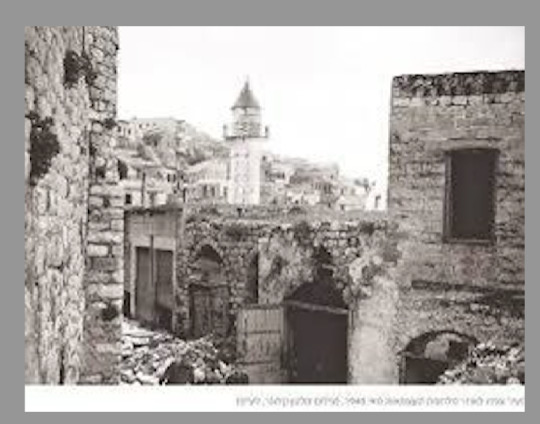
8/ The 1840 Damascus Affair
The Damascus Affair of 1840 was a horrifying example of the blood libel myth, a baseless and antisemitic accusation that Jews murder non-Jews to use their blood for religious rituals. This particular incident unfolded in Ottoman-controlled Damascus and left a deep scar on Jewish communities across the region and beyond.
The tragedy began when Father Thomas, a Catholic monk, and his Muslim servant mysteriously disappeared. Almost immediately local Christian leaders accused the Jewish community of abducting and murdering them for their blood, supposedly to bake matzot for Passover. The accusation, entirely unfounded, unleashed a torrent of violence and state-backed persecution against Damascus’s Jews.
Under pressure from local Christian clergy, the Ottoman authorities arrested several prominent Jewish figures, including rabbis and community leaders. These men were subjected to brutal torture to extract confessions to a crime they did not commit. Torture methods included floggings, burning, and deprivation of food and water. One man, Isaac Harari, died from the torture, and another, Aaron Monshe Rehama, succumbed to his injuries shortly after being released. The torture yielded forced confessions that only fueled further hysteria.
As rumors spread, mobs looted Jewish homes and desecrated synagogues. The community lived in terror, with many families hiding in fear of further arrests or violence. The situation worsened when the Ottoman authorities imprisoned dozens more Jews, including children, in an attempt to pressure the community into “confessing” to collective guilt.
The Damascus Affair also had international implications. Initially, France supported the blood libel accusations due to the influence of local Catholic leaders. However, prominent Jews in Europe, including Sir Moses Montefiore, Adolphe Crémieux, and Salomon Munk, mobilized a vigorous diplomatic campaign to challenge the lies. They traveled to Alexandria and Constantinople, lobbying influential leaders like Muhammad Ali of Egypt and Sultan Abdülmecid I of the Ottoman Empire to stop the persecution.
Eventually, after months of pressure and mounting evidence of the absurdity of the charges, the surviving Jewish prisoners were released. Still, the community was left in ruins. The aftermath of the affair saw Damascus’s Jewish population diminished and traumatized. Many families fled, and those who remained lived under the shadow of renewed accusations.
The Damascus Affair exposed yet again the fragility of Jewish life under Ottoman rule and the enduring danger of antisemitic myths, this as well happened long before the creation of modern Zionism.

9/ The 1920 Nebi Musa Riots.
The Nebi Musa Riots, which took place during Easter week in April 1920, were among the first major instances of anti-Jewish violence in British-controlled Israel, occurring long before the establishment of modern Israel. The riots shattered the myth of peaceful coexistence between Jews and Arabs in the region and exposed the hostility Arab leaders harbored toward the growing Jewish community.
Nebi Musa was a Muslim religious festival traditionally marked by processions to a shrine near Jericho. In 1920, the festival coincided with Easter and Passover, bringing an unusually large number of Muslims, Christians, and Jews to Jerusalem. Arab leaders, including Haj Amin al-Husseini (later notorious for his collaboration with the Nazis), used the occasion to incite the crowds against the Jewish community. They spread false claims that Jews were threatening the Al-Aqsa Mosque and seeking to take over Muslim holy sites, a tactic that would recur in later decades.
The inflammatory rhetoric worked. On April 4, 1920, Arab mobs began attacking Jewish neighborhoods in Jerusalem. Armed with knives, clubs, and stones, they looted Jewish homes and businesses, burned property, and assaulted Jewish residents. Reports described horrific acts of violence, including the brutal killing of five Jews and the injury of over 200 others. Jewish women were targeted for sexual violence, adding to the community’s trauma.
The British authorities, unprepared for the scale of the violence, initially failed to contain the riots. British soldiers were criticized for their slow response, and some were even accused of sympathizing with the rioters. Jewish self-defense groups, including the Haganah’s predecessors, stepped in to protect their communities, marking one of the first organized efforts by Jews to defend themselves in modern Israel.
The aftermath of the riots further deepened tensions. Haj Amin al-Husseini, though implicated in inciting the violence, received a relatively light punishment and would later be appointed the Grand Mufti of Jerusalem, a decision with disastrous consequences. Meanwhile, the Jewish community, already shaken from European pogroms, began to view self-defense as essential for survival in the face of local hostility.
The 1920 Nebi Musa Riots are a powerful reminder that violence against Jews in the Middle East was not a product of Zionism but a reflection of deep hostility toward Jewish communities.
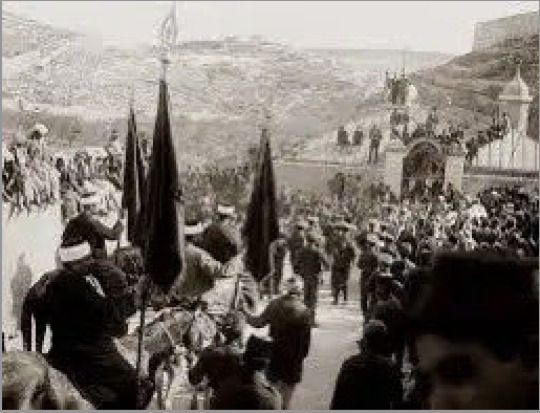
10/ The 1929 Hebron Massacre.
In August 1929, one of the darkest chapters in Jewish history under the British Mandate unfolded in the ancient city of Hebron, where a long established Jewish community had lived for thousands of years. Hebron, considered one of Judaism’s four holy cities, was home to a mix of Sephardi and Ashkenazi Jews, many of whom lived peacefully alongside their Arab neighbors, until incitement turned deadly.
Tensions had been brewing for months, fueled by false rumors spread by Arab leaders and the Grand Mufti of Jerusalem, Amin al-Husseini. Claims circulated that Jews were planning to take over the Temple Mount and destroy the al-Aqsa Mosque. These fabrications were spread intentionally to inflame anti-Jewish sentiment and provoke violence.
On the 23rd and 24th of August, Arab mobs descended upon the Jewish community of Hebron, armed with knives, clubs, and firearms. The British authorities, overwhelmed and unprepared, failed to intervene effectively. Over the course of two days, 67 Jews were brutally murdered, men, women, and children alike. Victims were tortured, mutilated, and dismembered. Entire families were wiped out in their homes.
One of the most horrific aspects of the massacre was the betrayal by neighbors. Some Arabs, with whom the Jews had coexisted peacefully for years, turned on them.
The aftermath was devastating. The Jewish quarter was looted and ransacked. Synagogues were desecrated, Torah scrolls destroyed. Survivors were forcibly evacuated by the British, ending a Jewish presence in Hebron that had lasted centuries. The city, once a symbol of coexistence, became a stark reminder of how quickly incitement and hatred could shatter fragile relations.
The massacre was part of a larger wave of violence that also targeted Jews in Jerusalem, Safed, and other areas of Israel during the same period. It was not an isolated event but a symptom of escalating hostility toward the Jewish community, years before the establishment of modern Israel.

11/ The 1941 Farhud Massacre.
The Farhud, which took place on June 1-2, 1941, was a brutal pogrom against the Jewish community in Baghdad, Iraq. The violence erupted during the Jewish holiday of Shavuot, fueled by Nazi propaganda and growing political instability. The Iraqi government, under the pro-Nazi Rashid Ali al-Gaylani, had recently been overthrown by the British, leaving the country in chaos.
Pro-Nazi mobs, fueled by years of antisemitic rhetoric, attacked Jews with brutal force. Over 180 Jews were murdered, and hundreds more were injured. Mobs looted Jewish homes, destroyed businesses, and desecrated synagogues. Women were raped, and many victims were tortured and mutilated.
The British and Iraqi authorities intervened after two days of unchecked violence, but the damage was done. The Farhud shattered the Iraqi Jewish community, marking the beginning of a mass exodus. By the 1950s, most of Iraq’s 150,000 Jews had fled, many of them to Israel.
The Farhud remains a tragic reminder of how quickly a Jewish community, with a history in the region spanning over 2,600 years, could be destroyed by hatred and incitement. It underscored the urgent need for Jewish self-determination, which Zionism sought to provide.

12/ Palestinian Collaboration with Nazi Germany.
During the 1930s and 40s, the Palestinian Arab leadership, particularly the Mufti of Jerusalem, Haj Amin al-Husseini, formed an alliance with Nazi Germany. Husseini, who opposed Jewish immigration to Israel, wanted Nazi support for his goal of preventing a Jewish homeland. In 1941, he met with Adolf Hitler, where he expressed his admiration for the Nazis’ anti-Semitic policies and urged them to support the Arab cause against the Jews. Husseini also played a role in recruiting Muslim soldiers to fight for the Axis powers, including the notorious Waffen-SS. His collaboration with Nazi Germany, which included attempts to organize massacres of Jews in Israel, contributed to deepening the hostility and violence toward Jewish communities in the region.

Conclusion.
When I started studying and looking up these events, I was shocked by the crazy number of them. I had to choose from hundreds, if not thousands, of such atrocities throughout history. And knowing that each of these incidents means real people, Jewish men, women, and children, lost their lives or endured unimaginable torture, it broke my heart. It’s heartbreaking that, even today, we continue to prove, over and over again, how badly Jews have been treated, and how, in some corners of the world, there are still those who want us to endure even more suffering. The existence of Israel today is a direct result of all these painful events—a nation born out of the ashes of centuries of persecution. Israel stands as a shield, ensuring that Jews will never again face the horrors of those dark days. This history is not just a series of events, it’s a painful reminder of the resilience required to survive and the urgency of remembering so we can prevent such horrors from happening again.

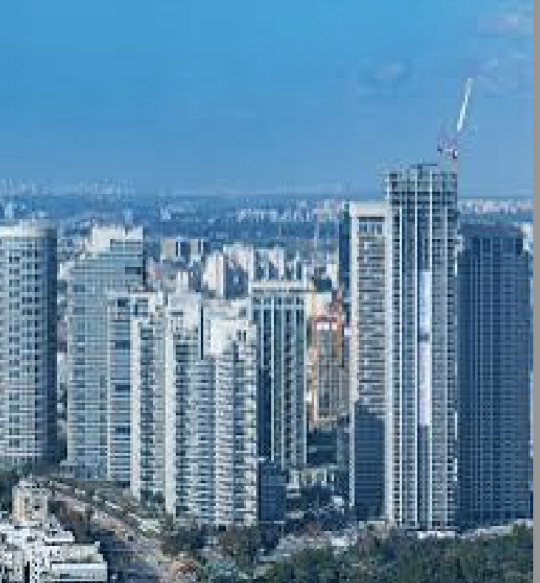
Although not all of the events happened in the Middle east per se, all of them happened under Muslim rule.
@AP_from_NY
68 notes
·
View notes
Text
Madrid Week 3: Flashbacks
Hola a todxs! It’s Niko back with week 3 of studying abroad in Madrid. Time is STILL passing by really fast and slow at the same time, so I'll talk about it again — I’ve been here less than a month and it’s felt like half a year, but the days go by quickly. I don’t think that will stop anytime soon, but I’m here for it. More perceived time = more life lived, and I hope that my weeks don't start blending together anytime soon.
As promised in week 2, I wanted to spend this blog talking about my trip to Granada last weekend. Granada is a small Spanish town in the southern region of Spain called Andalucía. It’s got a population of around 230,000 people — nearly the exact same as my hometown of Arlington, VA, which is a suburb outside of Washington, DC. However, in place of tree lined residential neighborhoods and modern office buildings, Granada is filled with narrow cobblestone streets bordered by low, densely packed buildings and intensely intricate churches/palaces built hundreds of years ago.
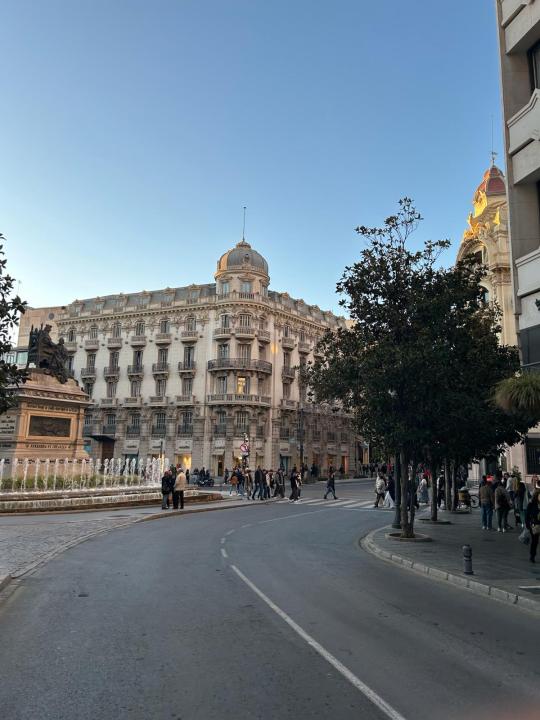
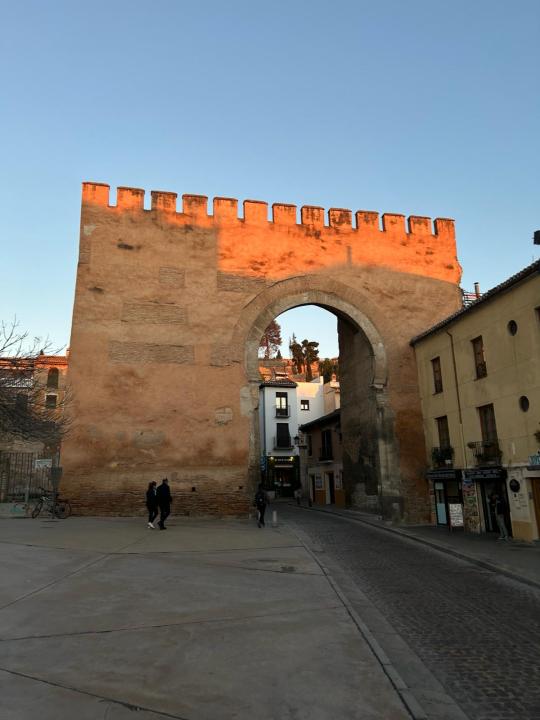

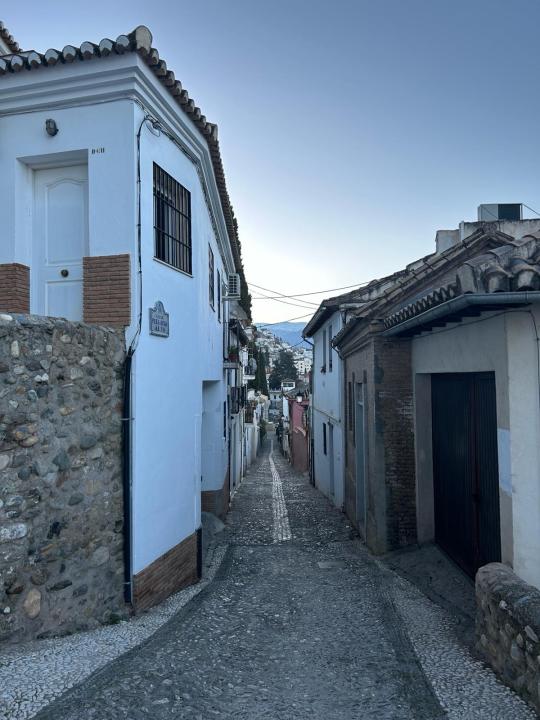
That palace — La Alhambra — is the largest tourist attraction in Granada, and was one of the main reasons I wanted to visit it (also, a big shout out to Emma for hosting me, a friend of mine from high school doing her semester in Granada!!). It’s a massive Moorish palace on a hill that overlooks the entire city. The Moors, who were North African Muslims, conquered much of the Iberian Peninsula in the 8th century. La Alhambra was slowly built between the years 1238 and 1358, during the reigns of Ibn al-Aḥmar and his successors.
With that said, my trip to Granada last weekend was not my first time seeing La Alhambra. As I mentioned briefly in week 0's blog, I took a trip to Spain with my 8th grade Spanish class for a week. That was 7 years ago. We hit most of the main touristic Spanish cities within that time, Granada included.
So, walking through the palace last weekend triggered a slow trickle of distant memories, fuzzy enough that I couldn’t remember details, but potent enough that I could remember how I felt. Some things had changed about the palace, many things stayed the same. I still felt the same sense of awe I did 7 years ago witnessing the incredible detail hand-carved into every surface, or seeing the palace perfectly reflected in a courtyard’s pool. The difference was that this time, I was exploring alone.
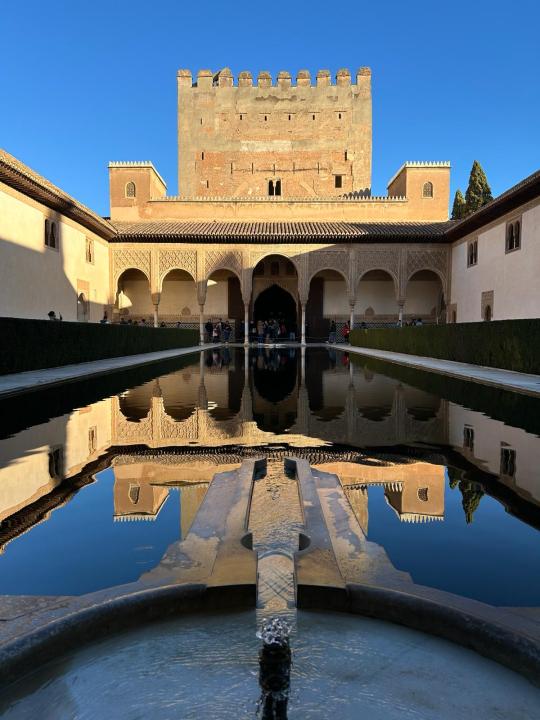


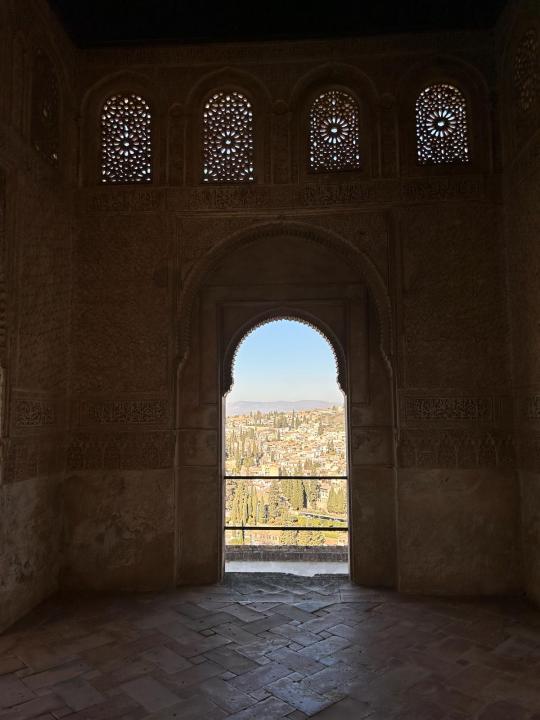
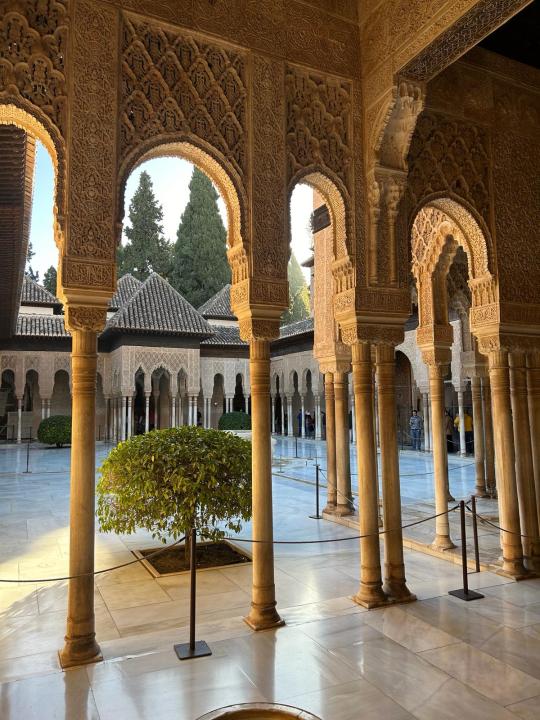
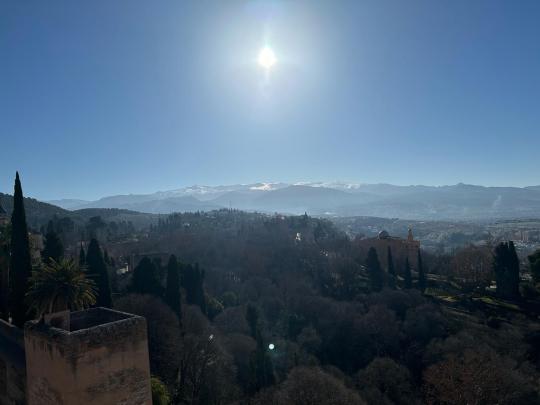
I think that during this trip, I really gained an appreciation — and curiosity — of solo travel. Although I was with my friend Emma much of the time, I felt a great deal of peace in exploring La Alhambra at my own pace. Without anyone else to turn to, I was forced to be present and attuned to my surroundings, and that enabled me to appreciate them that much more.
I think that part of that appreciation, however, was derived from the sense of independence and freedom I had existing alone in Granada. Going into college, being alone terrified me. I would step into the dining hall for lunch and wander through the common spaces, looking for a familiar face I could share a meal with. Now, I try my best to cherish the moments in which I can connect more to myself, whether that be during a meal, practicing a hobby, or exploring an ancient Moorish palace. That’s only something I've been able to move towards through consistent practice -- AKA, spending deliberate time alone. I hope to continue deepening that connection throughout this semester solo-exploring Spain and Europe, which I know is something I'll carry with me for the rest of my life.
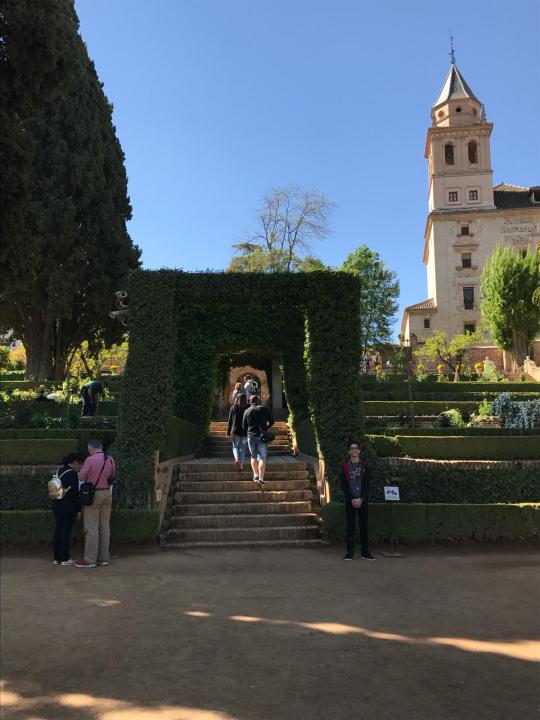
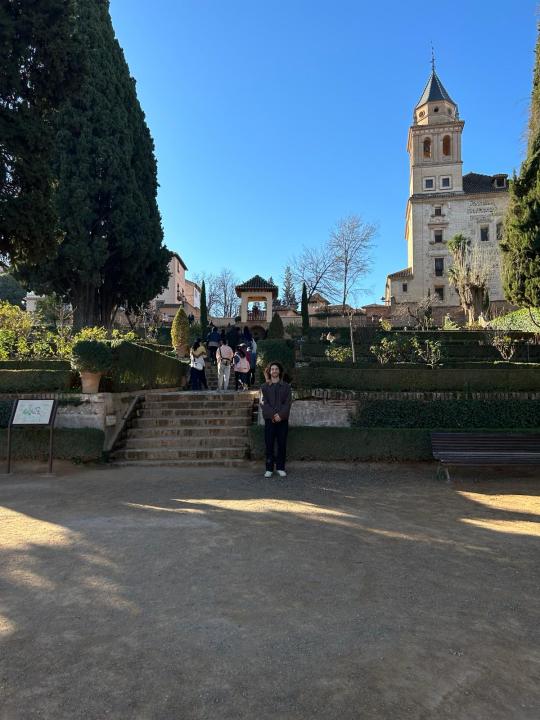
Aside from La Alhambra, Emma and I explored the city and its various landmarks (El Albaicin, a predominantly Muslim neighborhood, the Granada Cathedral, the Monastery of San Jeronimo, the Mirador de San Miguel Alto [and an epic sunset], and even a jazz-esque show with Spanish flair from a band at a local music club). More pictures below.
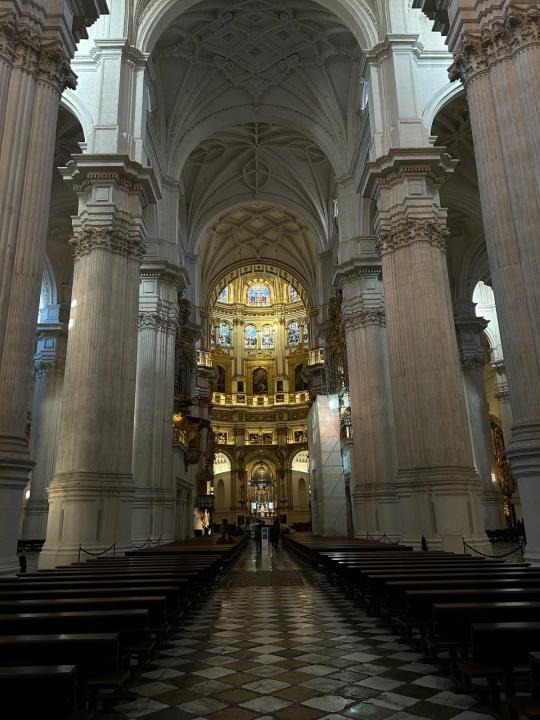
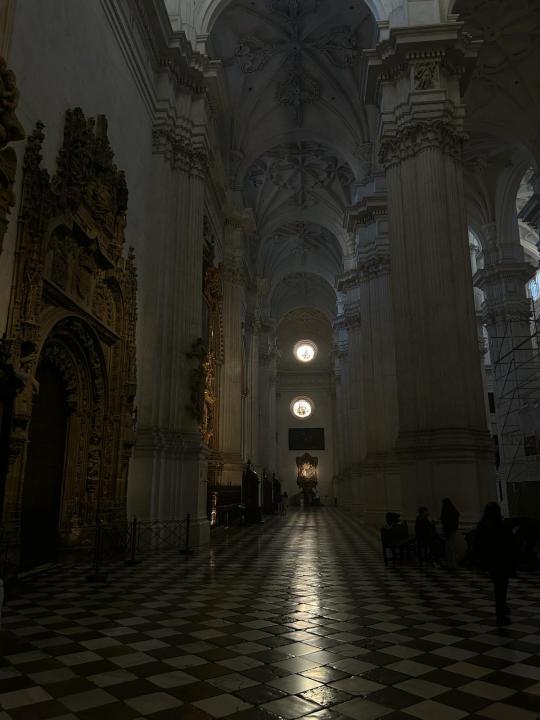
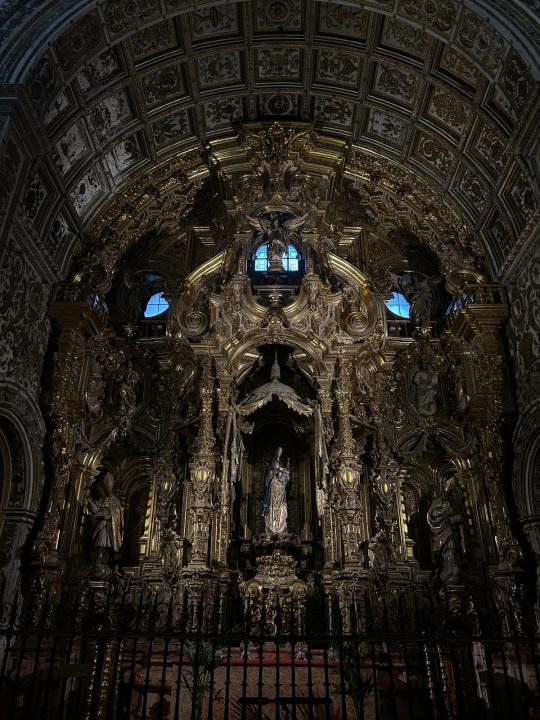
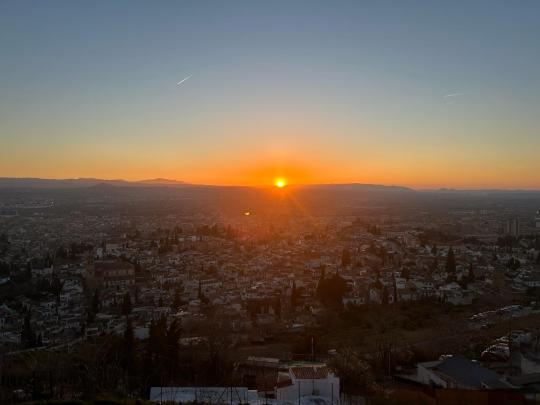
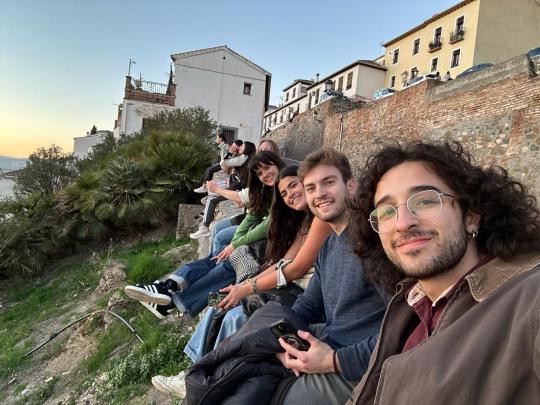


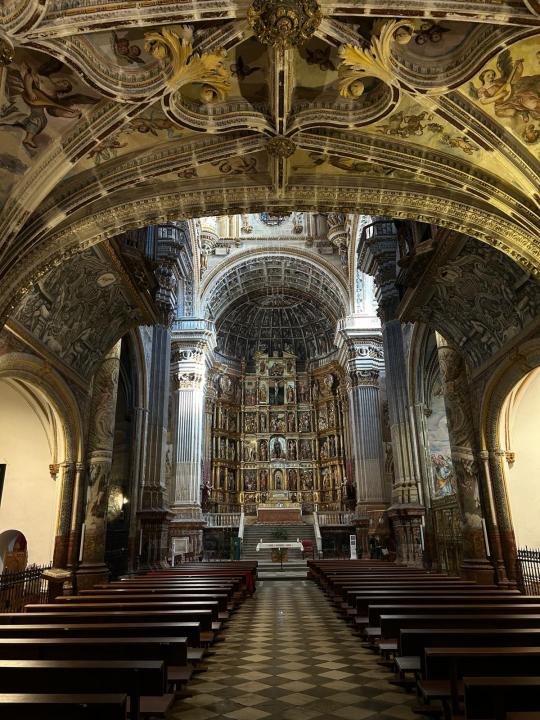
On the way back home, we stopped at a rest stop for the bus, and I couldn’t help but notice how familiar it seemed. It conjured up a nostalgic feeling that could have only come from my first trip in Spain — I realized we had stopped at the same station.
For old time’s sake, I bought a Kinder Egg Sorpresa. These things were a huge deal to me in 8th grade, as they are banned in the USA for being a ‘choking hazard’. Inside the chocolate exterior was a little plastic goat toy that will now serve as the centerpiece of our dining room table.

It’s funny to think how much of a different person I am from the 13 year old on vacation with his school friends and Spanish teachers. But it’s also comforting to know that all of these memories I carry with me explain the person I am today.
This week, I got a little more into school groove, took a rollerblading route, visited the Reina Sofia museum and went to see some amazing techno DJs over the weekend. Per usual, check out the photo captions for more info on the content this week :).
Hasta luego,
Niko Economos
Aerospace Engineering
Universidad Carlos III de Madrid
Madrid, Spain

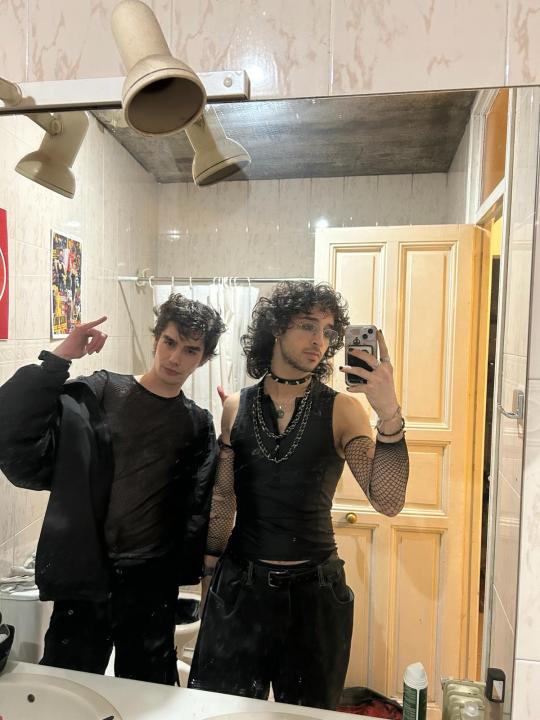
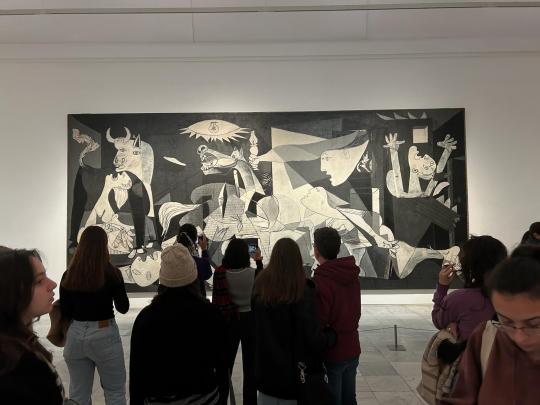
4 notes
·
View notes
Text

THE OLDEST UNIVERSITIES IN THE WORLD
Contrary to what many would have expected, the oldest universities in the world are located in Africa, not in ancient Greece or Europe, a study has revealed. Going by the results of the research, the foundation for the US first university was laid as late as in 1636 while the oldest university in Europe, the University of Bologna in Italy was founded in 1088 years after Africa had established universities, followed by the University of Oxford in the United Kingdom, which was founded in 1096. According to the research by Erudera, the oldest universities in the world are located in Egypt, Morocco and Mali respectively.
The Kemetic temple universities
The libraries of Kemet were not only places of archives, sacred words, papyrus manufacturing, and the like, they were also centers of learning, that combined the functions of their libraries and temples into universities.Hence Kemet became a land of temples, libraries, and universities. As
a result, the "temple-library-university" became the key center of ancient Kemetic intellectual
and spiritual activity. Ancient Kemetic temples like Waset and Ipet Isut are the oldest universities on planet earth. The Temple of Waset is the world's first university and was built during the reign of Pharaoh Amenhotep 111 in the XV111 Dynasty, 1405-1370 B.C. while the Ipet Isut temple was built during the reign of Senusert I of the 12th dynasty, who ruled from 1971-1926 BC.
Al-Qarawiyyin University, Morocco (859 CE - Present)
The second oldest standing university on earth is in Morocco. Known as Al-Qarawiyyin, the university was founded by a young princess in 859 A.D. by Tunisian-born Fatima al-Fihri in Morocco’s Fez. According to the United Nations, Guinness World Records, Manchester University Press and other credible sources, al-Qarawiyyin is the oldest university of the world still in use today.
Timbuktu University Mali (989 CE – Present)
The University ofTimbuktu is a collective term for the teaching associated with three mosques in the city of Timbuktu in what is now Mali: the masajid (mosques) of Sankore, Djinguereber, and Sidi Yahya. This third oldest University in the world is one of three ancient centres of learning located in Timbuktu, Mali. It was officially established in 13BC and it prospered and became a very significant seat of learning in the world, especially under the reign of Mansa Musa (1307-1332) and the Askia Dynasty (1493-1591). The University of Sankore has its roots in the Sankore Mosque which was founded in 989 ADby Al-Qadi Aqib ibn Mahmud ibn Umar, the Supreme Judge of Timbuktu.’ At its peak, long before Europeans built universities, the university at Timbuktu had an average attendance of around 25 000 students within a city of around 100 000 people.
All of the universities of Timbuktu predate Islam and were originally learning centers for Dogon and Meroitic sciences, which flourished throughout the Sahel. Islam did not introduce universities to Timbuktu, Islam appropriated the indigenous African universities already in Timbuktu (as well as numerous other ancient African cities) and turned them into masjids. The Timbuktu Meroitic universities were appropriated into masjids in 989 ce. This is over 1,200 years after the original university was established.
However, despite the religious shift of the universities, their architectural heritage remains faithful to the indigenous pre-Islamic Sahelian adobe architecture.
Credit: @Africa Native
40 notes
·
View notes
Photo






Almanzor and Subh
Subh was originally a Christian woman from Navarre by the name Aurora. When she was just a child, was sold as a slave in the territory of Al-Andalus becoming part of the harem of the Caliph of Córdoba Al-Hakam II. She was given an exquisite training, from singing to Islamic jurisprudence to poetry, that was only available to women of the highest status and slaves. The duty of the slaves, as part of the harem, was to entertain powerful men with their songs, dances and cultured conversations. Blonde, tall and intelligent, Subh captured the Caliph’s attention becoming his favorite and wife. Subh gave her husband two sons: Abd al-Rahman (born 961 and deceased in 970) and Hisham (born 965).
In the later years of his reign, the Caliph lost interest of the routine management of political affairs, and reportedly left it to his favorite wife, Subh. To fill this task, she expressed the need for a secretary, and Al-Mansur Ibn Abi Amir (also known as Almanzor) was appointed to this post. Born in an alqueria on the outskirts of Torrox to a family of Yemeni Arab origin with some juridical ancestors, Almanzor left for Córdoba when still young to be trained as a faqīh. After a few humble beginnings, he joined the court administration and soon gained the confidence of Subh. The Caliph was surprised that his wives and concubines preferred the gifts of the young Almanzor to his own. There were rumors that Almanzor became Subh’s lover and that this was the reason why she was to give him such influence in the affairs of state.

In 976, Al-Hakam died and was succeeded by his son, the eleven-year old Caliph Hisham II, under the regency of Queen mother Subh, the first minister Jafar al-Mushafi, and Almanzor, who became the administrator of the properties left to Subh by Al-Hakam. It was only a matter of time before rivalries and alliances started to form between the three regents. Subh sought an alliance with Almanzor. They managed to eliminate the influence of the minister. Reportedly, Subh provided Almanzor with the necessary funds to give him control of the army, by which he could secure the stability necessary for her son, a child, to be secured as Caliph with her as regent, after which she gave him much power in her government.
The collaboration between Subh and Almanzor reportedly worked completely well, friendly and close until 986, but as Almanzor power grew and the caliph's isolation, Subh became extremely concerned, and their alliance and effective rule began to disintegrate in 996, when a conflict arouse between them, because Almanzor was so ambitious, he angered Subh and her other allies, putting him in front of her and her allies. This conflict, causing Subh to an unsuccessful attempt to depose Almanzor from his position by introducing other male favorites as his rivals. During two years of bloody rivalry only for their own power, they created divisions in the center of the caliphate. Her second and last attempt to depose him in 998 resulted in his complete accession of all power, and ended her rule. Hisham II was locked up – with all the comforts but without power – in Medina Alzahira, where his mother was probably also imprisoned. Having lost her confrontation with her former ally, Subh died shortly thereafter in 999. Almanzor was the de facto leader of the Caliphate of Córdoba until his death in 1002.
23 notes
·
View notes
Text
Abū Abd al-Munim Īsā Abdallāh al-Dhaib (Tuwais)
Birth : 632 AD in Medina
Also known as : Taus, Tuways, Tuwais
Ethnicity : Arab
Occupation : Musician, Poet
Religion : Islam
Gender : Mukhannath/Queer
Sexuality : Gynesexual
Spouse : N/A
Death : 714 AD
Early life
Abū Abd al-Munim Īsā Abd Allāh al-Dhaib (also known as Taus, Tuwais) was born in 632 AD in Saudi Arabia. S/he was born on the same day when Prophet Muhammad (PBUH) died. S/he was weaned (aqiqah) on the same day when Abu Bakr was died. S/he had circumcision (Khatna) on the same day when Umar was assassinated. Tuwais was married when Uthmān was killed & his/her first son was born when Ali passed way. S/he was a mawlā of the Banū Mak̲h̲zūm, which was one of the wealthy clans of the Quraysh. When al-Dhaib joined the group of Mukhannathun, s/he changed his/her name into Tuways.
Career
Tuwais first attracted attention by singing melodies that s/he had learned from Persian captives. Sometimes s/he took a nickname for him/herself, something that only female singers did in early Arabia. S/he chose Tuways (means little peacock in Arabic) as his/her nickname. Ṭuwais is typically described as the “leading mukhannath musician during his lifetime.”
Tuwais was also being in the service of Arwā bint Kurayz, the (mother of the Caliph ʿUt̲h̲mān ibn ʿAffān). S/h rose to fame as a musician in the reign of Rashidun Caliph Uthmān ibn Affan. Uthman was tolerant of the mukhannathun, as long as they were practicing Muslims (which, by all accounts, they were). Tuwais reportedly was the first “great musician in earliest days of Islam” & “most influential mukhannath in early Arabia”. Tuwais had many disciples such as al-Dalal, Ibn Surayj, al-Gharīḍ, etc. S/he tutored Ibn Surayj, who became famous as the first muslim singer to successfully combine Persian and Hijaz music. According to musical literature sources, Tuwais and other mukhannath musicians enjoyed an exceptional visibility & prestige for a period of two generations.
Furthermore Ṭuwais and other mukhannath musicians formed an intermediary stage in the social class (mostly associated with musicians): women in pre-Islamic Arab, mukhannathun in the Rashidun Caliphates and early Umayyad Caliphates, & mainly non-mukhannath men in later time periods.
Persecution
In the later Umayyad period, mukhannathun faced widespread religious persecution, especially mukhannath/queer entertainers. Their lifestyles were declared unislamic during the reign of Caliph Marwan I . Most of them were forced to conform to cis-heteronormative lifestyle.
The first religious persecution of mukhannathun started at the reigns of Umayyad Caliph Marwan I. The governor of Mecca serving under al-Walīd I is said to have “issued a proclamation against the mukhannathun”, in addition to other entertainers. The most severe instances of religious persecution is typically dated back to the time of al-Walīd I's brother and successor Caliph Sulaymān ibn ʿAbd al-Malik, seventh Caliph of Umayyad dynasty.
According to several variants of this story, the transphobic caliph Sulayman ordered the full castration of Tuwais & other mukhannathun. Some versions of the tale say that all of them were forced to undergo the procedure, while others state that only a few of them were. Therefore, mukhannathun of Islamic Medina began to fade from historical sources, and the next generation of singers and musicians had few mukhannathun in their ranks.
6 notes
·
View notes
Text
🔘The Rightly Guided Caliphs: (The four Great Sahaba who ruled after the Prophet)
♻️️Abu Bakr As-Siddeeq – He was the Prophet’s (pbuh) chosen companion for the Hijrah. (Migration To Madinah)
♻️️Umar Ibn Al-Khattab – During his reign, Iraq, Syria, Palestine and Egypt all became part of the Muslim Empire.
♻️️Uthman Ibn Affan – He was considered the most modest of the Sahaba and even the angels would feel shy around him.
♻Ali Ibn Abi Talib – He grew up in the Prophet’s (pbuh) home and accepted Islam when he was ten years old.
🔵🔴🔘The Early Converts: (Those who converted before the Hijrah)
♻️️Zaid Ibn Haritha – He chose to live with the Prophet (pbuh) over his own father.
♻️️Khadija Bint Khuwailid – She was the Prophet’s first wife and the first believer too.
♻️️Fathima Bint Asad – She was the wife of Abu Talib and raised the Prophet (pbuh) after his grandfather passed away.
♻️️Safiyya Bint Abdul Mutallib – She was the Prophet’s (pbuh) aunt and mother of Zubair Ibn Al-Awwam
♻Abu Ubaidah Ibn Al-Jarrah – He was known as the trustworthy man of this ummah and was chosen to lead the Muslim armies by
♻️️Umar Ibn Al-Khattab.
Abu Dharr Al-Ghifaari – He was not from Makkah but went to Makkah in search of the Prophet (pbuh) and became an early convert.
♻️️Zubair Ibn Al-Awwam – He was the first person to draw his sword in defense of Islam.
♻️️Bilal Ibn Rabaa – He was an African slave who was freed and became the first Mu’addhin.
♻️️Talha Ibn Ubaidullah – He was known as the living martyr due the number of injuries he sustained at Uhud.
♻️️Sad Ibn Abi Waqqas – He was one of the blessed ten and the last of them to pass away.
♻️️Fathima Bint Al-Khattab – She was the sister of Umar and converted to Islam before him.
♻️️Zaid Ibn Al-Khattab – He was the elder brother of Umar, converted to Islam before him, and was martyred at Yamama.
♻Abdur Rahman Ibn Awf – He was the wealthiest Sahabi and was extremely generous. He was also one of the blessed ten.
♻Khabbab Ibnt Arrat – He was an early convert who endured the worst torture for the sake of Islam.
♻Saeed Ibn Zaid – He was one of the blessed ten, husband of Fathima Bint Khattab and the son of the famous Zaid Ibn Amr Ibn Nufail. (look him up)
♻️️Sumayya bint Khayyat – She was the first martyr to die for Islam. She was killed by Abu Jahl.
♻️️Yasir Ibn Amir – Husband of Sumayya, he was the first male martyr to die for Islam. Also killed by Abu Jahl.
♻️️Ammar Ibn Yasir – The son of Yasir Ibn Amir. He lived a long life and died during the civil war.
♻️️Mus’ab Ibn Umair – He was the first person to be sent out of Makkah on an official mission of Dawah, and was responsible for the Dawah spreading through Madinah.
♻️️Abu Hudhaifah Ibn Utbah – He was an early convert to Islam who was martyred at Yamama.
♻️️Salim Mawla Abi Hudhaifah – He was the slave of Abu Hudhaifa, who freed him and adopted him. They died together in Yamama,
♻Hamza Ibn Abdul Mutallib -He was the uncle of the Prophet (pbuh). He was martyred at Uhud.
🔴🔵🔘The Ansar of Madinah: (The helpers, the Sahaba from Madinah)
❤️️Sa’d Ibn Muadh – He was the leader of the Aus tribe, and was martyred after the Battle of the Trench.
❤️️Sa’d Ibn Ubadah – He was the leader of the Khazraj tribe, and was appointed as the leader of the Ansaar.
❤️️Abdullah Ibn Rawaaha – He was the poet who defended Islam with his words. He was martyred at Mut’ah.
❤️️Umm Sulaim Ar-Rumaysa – When Abu Talha wanted to marry her, she asked him to convert to Islam and his conversion would suffice as her Mahr (wedding gift).
❤️️Anas Ibn Malik – The son of Umm Sulaim, he served the Prophet (pbuh) for ten years and never encountered a bad word from him.
❤️️Al-Baraa Ibn Malik – Another son of Umm Sulaim, he was a brave warrior responsible for the victory at Yamama.
❤️️Abdullah Ibn Salaam – He was a Jewish Rabbi who converted to Islam.
❤️️Salmaan Al-Farsee – He was a Persian who traveled in search of the truth. His travels brought him to Madinah and Islam.
❤️️Abu Darda – He was known for his dislike for this world and love of the late night prayer.
❤️️Abu Dujana – He was a brave warrior who was given the Prophet’s (pbuh) sword.
❤️️Umm Haram Bint Milhan – The Prophet (pbuh) prophecized that she would sail with the first Muslim navy. She did so and was buried in Cyprus.
🔵🔴🔘The Late Converts: (Those who converted in the last five years of the Prophet’s life)
❤️️Khalid Ibn Waleed – He was known as the sword of Allah and was undefeated in battle.
❤️️Amr Ibn Al-Aas – He was a well-spoken diplomat and was responsible for the conquest of Egypt.
❤️️Abu Sufyan – He fought against Islam most of his life, eventually converted and from his progeny came the first Muslim dynasty.
❤️️Hind Bint Utbah – The wife of Abu Sufyan, and the mother of the first Muslim King, Muawiyah.
❤️️Wahshi – He was a freed slave who was responsible for killing Hamza before becoming a Muslim, and accredited with killing the false prophet Musaylama after converting.
❤️️Uthman Ibn Talha – He was responsible for the keys of the Kabah and this responsibility remains with his descendants until today.
❤️️Ikrimah Ibn Abi Hakam – He was the son of Abu Jahl, and died a martyr at Yarmook.
❤️️Safwan Ibn Umayyah – He was the son of Umayyah Ibn Khalaf and only converted to Islam after the battle of Hunayn.
❤️️Suhail Ibn Amr – He was a dynamic speaker and initially a staunch enemy of Islam. He expressed great regret at accepting Islam so late, and made up for it in Jihad.
❤️️Abu Hurairah – He converted to Islam three years before the Prophet (pbuh) passed away, yet narrated more Hadiths than any other Sahabi.
❤️️Muawiyah Ibn Abi Sufyan – He was the first Muslim king and founder of the Umayyad Dynasty.
❤️️Yazeed Ibn Abi Sufyan – He was the elder brother of Muawiyah and considered more righteous than him.
❤️️Abbas Ibn Abdul Mutallib – He was the uncle of the Prophet (pbuh) and is considered the last person to make Hijrah to Madinah.
🔴🔵🔘The Prophet’s Wives: (Khadija was already mentioned earlier)
❤️️Aisha Bint Abi Bakr – She narrated more Hadiths than any other woman and was a great scholar of Islam.
❤️️Sauda Bint Zam’ah – She was the second woman that the Prophet (pbuh) married and helped raise his daughters.
❤️️Hafsa Bint Umar – She was the daughter of Umar Ibn Al-Khattab and the custodian of the Qur’an.
❤️️Zainab Bint Jahsh – She was the Prophet’s cousin and married to him through Surah Al-Ahzaab. She was known for her generosity.
❤️️Safiyyah Bint Huyay – She was the daughter of a Jewish Chief, and a descendant of Prophet Harun (AS).
❤️️Juwairiyyah Bint Al-Harith – She was known for spending most of her time in Salah and Dhikr.
❤️️Zainab Bint Khuzayma – She was known for her generosity and passed away two years after marrying the Prophet (pbuh).
❤️️Maymuna Bint Al-Harith – She was the last woman that Prophet Muhammad (pbuh) married.
❤️️Umm Habiba Bint Abi Sufyan – She was one of those who migrated to both Abyssinia and later Madinah.
❤️️Umm Salama – She was known for her wisdom and knowledge. She narrated many important Hadiths.
🔴🔵🔘The Prophet’s Family and Relatives:
❤️️Fathima – She is the leader of the women of Paradise.
❤️️Zainab – She was the Prophet’s eldest daughter and passed away during his lifetime.
❤️️Ruqayya – She was married to Uthman Ibn Affan and passed away around the same time as the Battle of Badr.
❤️️Umm Khulthoom – She married Uthman Ibn Affan after her sister passed away. She also passed away during the Prophet’s lifetime.
❤️️Hassan Ibn Ali – He was responsible for ending the first civil war and reuniting the ummah.
❤️️Hussain Ibn Ali – He was known for his courage in standing up for what he believed in. He was martyred at Karbala.
❤️️Fadhl Ibn Abbas – He was the Prophet’s (pbuh) cousin and assisted in his burial.
❤️️Abdullah Ibn Abbas – He was the younger brother of Fadhl and is known as the greatest authority on Tafseer.
❤️️Jafar Ibn Abi Talib -He was the Prophet’s (pbuh) cousin, and represented the immigrants to Abyssinia in the court of the King of Abyssinia.
❤️️Usamah Ibn Zaid – He was the son of Zaid Ibn Haritha and the Prophet (pbuh) appointed him as a leader when he was still a teenager.
The Sahaba were the first and best generation of Muslims. We need to learn about them, love them, and emulate them. To help you learn more about the Sahaba, here is a short list of 70 amazing facts about 70 Sahaba.
‼️‼️NOTE: I did not write (RA) after each Sahabi’s name, as it is recommended to say it but not obligatory to write it. (RA) is short for Radi Allahu Anhu/haa/hum which means ‘May Allah be pleased with him/her/them’.
���

2 notes
·
View notes
Text
Ministry of Tourism announces receiving 15.7 million tourists in various regions

Last year, Egypt welcomed many tourists who reached more than 15 million tourists around the world, so if anyone wants to try Egypt tours, you should know that Egyptians are always greeting everyone. If you want to travel to Egypt, so Egypt travel guide is your best friend; through it, you can get a lot of beneficial information about tours.
Egyptians are trying hard to develop tourism investment through the many archaeological discoveries and offer Cairo tourist attractions, which are indispensable in attracting tourism to Egypt. There are many examples that we will know more about Cairo in this article.
Cairo has many tourist places, such as the Egyptian Museum, which includes many valuable antiquities that are indispensable for tourism investment, the most famous of which is the golden mask of King Tutankhamun, which is covered by gold, and a lot of other monuments there. If we go back in time to the Pharaonic era, we will find many Pharaonic monuments that history testifies to being some of the best monuments in the world. If we go back to the Third Dynasty, we will find the first idea to build the pyramids, which was built by King Djoser, namely the Saqqara Necropolis, which is considered the oldest pyramid.
about the pyramids, we shouldn’t forget the Great Sphinx, which was built by King Khafre, despite the difference of opinions about it, and which is located in the Giza area near the middle pyramid, which was built by the same king.
Now we will go back in history to the Coptic era, which has many monuments in Cairo, for example, the Hanging Church in Old Cairo. This church is considered a major tourist destination, as the Holy Family visited and lived in it, making it a holy place for Christians all over the world. Also in Cairo, there is the Ben Ezra synagogue, which is also located in Old Cairo. The name comes from the philosopher Abraham Ben Ezra, who was in Egypt during the reign of Ahmed Ibn Tulun, which indicates that there were many different religions in Egypt at that time. As we know that Islam entered Egypt by Amr ibn al-Aas, who built many Islamic places that influenced Egypt, and there are some of these Islamic places, especially Islamic Cairo, which contains the Amr ibn al-Aas Mosque and Al-Azhar Mosque, which is visited by many Muslims to learn about the Islamic religion.
Also the Sultan Hassan complex, which is considered the largest mosque in the world. In addition to the Salah El Din Citadel, which is considered a strong indication of the Islamic era, it is located in the al-Qalaa area. We conclude the article with one of the best Islamic places in Egypt, Khan el Khalili, which dates back to the 19th century. This place includes many traditional arts and shops specializing in perfumes and medicinal herbs. In addition to the food street, which has many Egyptian foods, this place is located in the Hussein area. After all this, I hope that you have learned more about the Egypt tours and that you will come to Egypt soon to see all the beauty. I do not doubt that if you come, you will go back to your country, but you will want to return.
1 note
·
View note
Text
When the Ghassanid tribe became a significant ally of the Byzantine
The Ghassanid tribe became a significant ally of the Byzantine Roman Empire during the reign of Byzantine Emperor Justinian I, specifically around the early 6th century, with the Ghassanid king al-Harith ibn Jabalah playing a key role in solidifying this alliance by supporting the Byzantines against the Sasanian Persians; this is when they were formally recognized as a Byzantine vassal and given titles like "patricius.".
Key points about the Ghassanid-Byzantine alliance:
Time period: Early 6th century, during the reign of Justinian I.
Key Ghassanid leader: Al-Harith ibn Jabalah
Reason for alliance: To combat the Sasanian Persian Empire
Role of Ghassanids: Served as a buffer state against Arabian tribes, providing troops to the Byzantine army.
0 notes
Text
AL KINDI
Abu Yusuf ya'qub Ibn Ishaq as Sabah al-kindi born in 801 AD in Kufa he is known as the first Muslim philosopher During his life besides being able to speak Arabic he was proficient in Greek and Syriac in the western world he is known as alkindus Al-kindi was born into an Arab family who belonged to the kindah tribe one of the great tribes of the South Arabian Peninsula His father was a Governor in Kufa during the reign of the Abbasid Caliph when he was little al-kindi's father died Even though he's an orphan, he doesn't just give up or give up in studying Alkindi received her first education at Kufa He then left to complete his education in Baghdad because of his intelligence the caliph al-ma'mun then asked him to teach at the Baitulhikmah Al-kindi is a book translator many works of Greek philosophers
0 notes
Text
Events 11.1 (before 1900)
365 – The Alemanni cross the Rhine and invade Gaul. Emperor Valentinian I moves to Paris to command the army and defend the Gallic cities. 996 – Emperor Otto III issues a deed to Gottschalk, Bishop of Freising, which is the oldest known document using the name Ostarrîchi (Austria in Old High German). 1009 – Berber forces led by Sulayman ibn al-Hakam defeat the Umayyad caliph Muhammad II of Córdoba in the battle of Alcolea. 1141 – Empress Matilda's reign as 'Lady of the English' ends with Stephen of Blois regaining the title of 'King of England'. 1179 – Philip II is crowned as 'King of France'. 1214 – The port city of Sinope surrenders to the Seljuq Turks. 1348 – The anti-royalist Union of Valencia attacks the Jews of Murviedro on the pretext that they are serfs of the King of Valencia and thus "royalists". 1503 – Pope Julius II is elected. 1512 – The ceiling of the Sistine Chapel, painted by Michelangelo, is exhibited to the public for the first time. 1520 – The Strait of Magellan, the passage immediately south of mainland South America connecting the Pacific and the Atlantic Oceans, is first discovered and navigated by European explorer Ferdinand Magellan during the first recorded circumnavigation voyage. 1555 – French Huguenots establish the France Antarctique colony in present-day Rio de Janeiro, Brazil. 1570 – The All Saints' Flood devastates the Dutch coast. 1601–1900 1604 – William Shakespeare's tragedy Othello is performed for the first time, at Whitehall Palace in London. 1611 – Shakespeare's play The Tempest is performed for the first time, at Whitehall Palace in London. 1612 – During the Time of Troubles, Polish troops are expelled from Moscow's Kitay-gorod by Russian troops under the command of Dmitry Pozharsky (22 October O.S.). 1683 – The British Crown colony of New York is subdivided into 12 counties. 1688 – William III of Orange sets out a second time from Hellevoetsluis in the Netherlands to seize the crowns of England, Scotland and Ireland from King James II of England during the Glorious Revolution. 1755 – In Portugal, Lisbon is totally devastated by a massive earthquake and tsunami, killing an estimated 40,000 to 60,000 people. 1765 – The British Parliament enacts the Stamp Act on the Thirteen Colonies in order to help pay for British military operations in North America. 1790 – Edmund Burke publishes Reflections on the Revolution in France, in which he predicts that the French Revolution will end in a disaster. 1800 – John Adams becomes the first President of the United States to live in the Executive Mansion (later renamed the White House). 1805 – Napoleon Bonaparte invades Austria during the War of the Third Coalition. 1814 – Congress of Vienna opens to re-draw the European political map after the defeat of France in the Napoleonic Wars. 1848 – In Boston, Massachusetts, the first medical school for women, Boston Female Medical School (which later merged with the Boston University School of Medicine), opens. 1861 – American Civil War: U.S. President Abraham Lincoln appoints George B. McClellan as the commander of the Union Army, replacing General Winfield Scott. 1870 – In the United States, the Weather Bureau (later renamed the National Weather Service) makes its first official meteorological forecast. 1893 – The Battle of Bembezi took place and was the most decisive battle won by the British in the First Matabele War of 1893. 1894 – Nicholas II becomes the new (and last) Tsar of Russia after his father, Alexander III, dies. 1894 – Buffalo Bill, 15 of his Native Americans, and Annie Oakley were filmed by Thomas Edison in his Black Maria Studio in West Orange, New Jersey. 1896 – A picture showing the bare breasts of a woman appears in National Geographic magazine for the first time. 1897 – The first Library of Congress building opens its doors to the public; the library had previously been housed in the Congressional Reading Room in the U.S. Capitol. 1897 – Italian Sport-Club Juventus is founded by a group of students of Liceo Classico Massimo d'Azeglio.
0 notes
Text

Mansa Musa (c. 1312 – c. 1337) was the ninth mansa of the Mali Empire, which reached its territorial peak during his reign. He is known for his wealth and gift-giving and has sometimes been called one of the wealthiest people in history.
At the time of his ascension to the throne, Mali in large part consisted of the territory of the former Ghana Empire, which Mali had conquered. The Mali Empire consisted of land that is now part of Guinea, Senegal, Mauritania, The Gambia, and the modern state of Mali.
He went on hajj to Mecca in 1324, traveling with an enormous entourage and a vast supply of gold. En route, he spent time in Cairo, where his lavish gift-giving is said to have noticeably affected the value of gold in Egypt and garnered the attention of the wider Muslim world.
He expanded the borders of the Mali Empire, in particular incorporating the cities of Gao and Timbuktu into its territory. He sought closer ties with the rest of the Muslim world, particularly the Mamluk Sultanate and the Marinid Sultanate. He recruited scholars from the wider Muslim world to travel to Mali, such as the Andalusian poet Abu Ishaq al-Sahili, and helped establish Timbuktu as a center of Islamic learning. His reign is associated with numerous construction projects, including part of the Djinguereber Mosque in Timbuktu. His reign is regarded as the zenith of Mali’s power and prestige.
His name was Musa, the Arabic form of Moses. Mansa, ‘ruler’ or ‘king’ in Mandé, was the title of the ruler of the Mali Empire. It has been translated as “conqueror” and “priest-king”. In oral tradition and the Timbuktu Chronicles, he is known as Kanku Musa. In Mandé tradition, it was common for one’s name to be prefixed by their mother’s name, so the name Kanku Musa means “Musa, son of Kanku”, although it is unclear if the genealogy implied is literal. He is called Hidji Mansa Musa in the oral tradition of his hajj.
Al-Yafii gave his name as Musa ibn Abi Bakr ibn Abi al-Aswad and Ibn Hajar gave his name as Musa ibn Abi Bakr Salim al-Takruri. #africanhistory365 #africanexcellence
0 notes
Text

Last weekend I visited Qatar. I only actually saw Doha and as it was during Ramadan daytime activities were quite limited, with museums having different opening hours and some of the Souk was closed.
Qatar seemed like a country in a hurry and wanting to be a part of EVERYTHING. The National Museum shows this with displays from how they are involved in other countries with their financial aid and support, the pride in having the Middle East’s main news channel, the recent FIFA Men’s World Cup and their involvement in international negotiations.
Qatar has been inhabited for at least 50,000 years and they have uncovered Stone Age settlements.
In 224 AD, the Sasanian Empire gained control over the territories surrounding the Persian Gulf. Qatar had an important role in the commercial activity of the Sasanids partly due to the pearl industry.
Under the Sasanid reign most of the area was Christian. In 628, the Islamic prophet Muhammad sent a Muslim envoy and mass conversions took place. In the middle of the century, the Muslim conquest of Persia resulted in the fall of the Sasanian Empire.
In 1515 the Portuguese arrived and by 1521 they had seized a large part of eastern Arabia. In 1550, the inhabitants of Al-Hasa voluntarily submitted to the rule of the Ottomans, preferring them to the Portuguese. The Portuguese however regained control in 1551.
In 1766, members of the Al Khalifa family of the Utub tribal confederation migrated from Kuwait to Zubarah in Qatar and took control. In 1783, they and allied Arab tribes invaded and annexed Bahrain from the Persians.
Between 1788 and 1795 present day Qatar was under the rule of Saud ibn Abd al-Aziz of Wahhabi (the first Saudi state) until Al Khalifa was returned to power ruling from Bahrain.
In 1825, the House of Thani was established with Sheikh Mohammed bin Thani as the first leader. Thani signed "an agreement, not a formal treaty" with Britain in 1868 that recognised Qatar’s separate status (from Bahrain).
The Al Thani tribe submitted to Ottoman rule in 1871 which lasted until 1915. The Anglo-Ottoman Convention of 1913 saw the Ottomans agree to renounce their claim to Qatar and withdraw their garrison from Doha. However, with the outbreak of World War One, nothing was done to carry this out, and the garrison remained in the fort at Doha, although its numbers dwindled as men deserted until it was abandoned in 1915.
Qatar became a British protectorate on 3 November 1916 when the United Kingdom signed a treaty with Sheikh Abdullah bin Jassim Al Thani. The treaty reserved foreign affairs and defence to the United Kingdom but allowed internal autonomy.
On 5 May 1935 another treaty with the British government which granted Qatar protection against internal and external threats.
Oil was discovered in 1939, but not exploited until after the World War Two. Oil exports began in 1949, and oil revenues became the country's main source of revenue (as the pearl trade declined).
When Britain officially announced in 1968 that it would withdraw from the Persian Gulf in three years' time, Qatar joined talks with Bahrain and seven other Trucial States to create a federation. Regional disputes, however, persuaded Qatar and Bahrain to withdraw from the talks and become independent states separate from the Trucial States, which went on to become the United Arab Emirates.
Qatar has around 3 million residents, but only around 10% are Qatari citizens with the vast majority of residents being expatriates and migrant workers.
Islam is the official religion, although only around two-thirds of the population are Muslim with large Hindu and Christian minorities (around 15% each).
0 notes
Text
2 Kings 24: 13-14. "The Exile."

History reports the Kingdom of Israel wore away, like the tide encroaches upon a sand castle, especially after Babylon got a hold of it. Nebuchadnezzar's reign had ups and downs, and for a long time his reputation was mediocre, but the final word on his government is flattering:
"After this disappointing early period as king, Nebuchadnezzar's luck turned. In the 580s BC, Nebuchadnezzar engaged in a successful string of military actions in the Levant against the vassal states in rebellion there, likely with the ultimate intent of curbing Egyptian influence in the region. In 587 BC, Nebuchadnezzar destroyed the Kingdom of Judah, and its capital, Jerusalem. The destruction of Jerusalem led to the Babylonian captivity as the city's population, and people from the surrounding lands, were deported to Babylonia.
The Jews thereafter referred to Nebuchadnezzar, the greatest enemy they had faced until that point, as a "destroyer of nations" (משחית גוים, Jer. 4:7). The biblical Book of Jeremiah paints Nebuchadnezzar as a cruel enemy, but also as God's appointed ruler of the world and a divine instrument to punish disobedience.
Through the destruction of Jerusalem, the capture of the rebellious Phoenician city of Tyre, and other campaigns in the Levant, Nebuchadnezzar completed the Neo-Babylonian Empire's transformation into the new great power of the ancient Near East."
The Destruction of Jerusalem a relatively small one horse, one donkey town in the Middle East called "the place that teaches peace" has in realtity been a burr in our saddle holes for thousands of years.
The world has always bellyached over the place insteading of monumentalizing its role as a pole star that should, as far as we know, guide humanity to the feet of God for all eternity.
The Prophet Muhammad sojourned to Jerusalem and there achieved his Isra. He was quite in love with the place:
In Sunni Islam, Jerusalem is the third-holiest city after Mecca and Medina.[17][18] Muslims believe that Muhammad was transported to Jerusalem during his Night Journey (Isra and Mi'raj).[19] The Qur'an describes how the prophet was taken by the miraculous steed Buraq from the Great Mosque of Mecca to Al-Aqsa ('"the farthest place of prayer") where he prayed, and then to visit heaven in a single night in the year 621.[20][19]
Glory be to the One Who took His servant ˹Muḥammad˺ by night from the Sacred Mosque to the Farthest Mosque whose surroundings We have blessed, so that We may show him some of Our signs. Indeed, He alone is the All-Hearing, All-Seeing.
Although the city of Jerusalem is not mentioned by any of its names in the Qur'an, it is mentioned in later Islamic literature as the place of Muhammad's Night Journey.[21] The story of Muhammad's ascension from Al-Aqsa Mosque was understood as relating to the Temple in Jerusalem (referred to as Bayt Al-Maqdis).[22] The Al-Aqsa Mosque is specified of being in Jerusalem in numerous hadith (prophetic traditions):
When the people of Quraish did not believe me (i.e. the story of my Night Journey), I stood up in Al-Hijr and Allah displayed Jerusalem in front of me, and I began describing it to them while I was looking at it.
The most holy spot [al-quds] on earth is Syria; the most holy spot in Syria is Palestine; the most holy spot in Palestine is Jerusalem [Bayt al-maqdis]; the most holy spot in Jerusalem is the Mountain; the most holy spot in Jerusalem is the place of worship [al-masjid], and the most holy spot in the place of worship is the Dome
Zayd ibn Thabit reports that the Prophet said, "How blessed is al-Sham! The Companions around asked: "Why is that?" The Messenger replied, "I see the angels of Allah spread their wings over al-Sham". lbn Abbas added, "and the Prophets lived in it. There is not a single inch in al-Quds (Jerusalem) where a Prophet has not prayed or an angel not stood".
The spiritual importance of Jerusalem in Islam is further emphasized due to its status as the first Qibla (direction of prayer).
What has happened to and because of the place is a disgrace. There is no chance for Jerusalem in Exile, a universal global town that practices all the scholarship that has come from the real place so long as we intend for its name to be a nasty annoying swear word that bobs like turd in the mouths of the toilets of the global sewer of politics.
Nebuchadnezzar's figurative solution for the problem is stated below, a lesson for all emperors, kings, queens, princes and princesses of Israel in the use of the Constitution to do what is right and put a stop to the evil:
In the eighth year of the reign of the king of Babylon, he took Jehoiachin prisoner. 13 As the Lord had declared, Nebuchadnezzar removed the treasures from the temple of the Lord and from the royal palace, and cut up the gold articles that Solomon king of Israel had made for the temple of the Lord.
14 He carried all Jerusalem into exile: all the officers and fighting men, and all the skilled workers and artisans—a total of ten thousand. Only the poorest people of the land were left.
An exile is the waiting period for Mashiach. Anytime law, order, learnedness, and goodness disappear, humanity becomes pregnant with a new baby era, one that has signs of none of these things:
Exile is likened to pregnancy, and the Redemption is likened to birth; as it is written, כי חלה גם ילדה ציון את בני-ה — “For Zion has been in labor, and has given birth to her children.”2
Our Sages teach3 that when an infant is in his mother’s womb, (a) “his head is between his knees,” not carrying out its function: it does not think, and though he has eyes they do not see; (b) “his mouth is closed and his navel is open”; i.e., his nourishment (for he eats what his mother eats) passes through his navel into his stomach and makes his body grow, rather than passing through his mouth, from which it would animate the heart and brain.
These two situations also characterize the Jewish people during the period of exile: (a) Since the Holy One, blessed be He, removed the revelation of His Presence from This World, the Children of Israel do not behold the Divine light. Moreover, (b) the life-giving flow that wells from one’s performance of mitzvos and good deeds does not enter through the mouth, from which it would animate the heart and brain, giving rise to a knowledge and love of G‑d; rather, divine service is carried out frigidly,4 מצוות אנשים מלומדה — “a commandment which men perform by rote.”
This is the essence of the spiritual meaning of exile.
Accordingly, the ultimate perfection of the days of Mashiach is a kind of birth — a revelation of the light of G‑d within the deepest recesses of a man’s heart. As it is written,5 ונגלה כבוד ה' וראו כל בשר — “The glory of G‑d will be revealed, and all flesh [together] will see [that the mouth of G‑d has spoken]”; and likewise too it is written,6 כי עין בעין יראו — “For they shall see eye to eye [when G‑d returns to Zion].”
Torah Or, Va’eira, p. 55a
The dispersion of Solomon's gold into the world during a period of wickedness is performed by constitutional governments in order to help the people of this world enter into God's Graces once again. None of what is happening, for example, in America with Joe Biden because he tolerates the foulnesses called the Republicans who support and finance domestic and international terrorism, in Russia with Valdimir Putin, who conscripts his people in order to invade non-hostile neighbors, in Iran, which is behaving like Russia, in the UK, where Charles, Willy, and Harry use germ and chemical warfare agains their subjects, etc. any place there are serious infractions between the Head of State and the people are permitted by the Constitution we have all agreed to abide by.
The result of the departure of such gold articles and furnishings, common sense being one of them is the Torah's concept of poverty-dumfuks who cluck like chickens and can no longer discern right from wrong.
Now we have to go into the backyard and shit out a copy of the Bible and find the verses that highlight how humanity's conduct is not meeting expectations and hope someone in a position of power will pay attention and do what has to be done. The scriptures contained in the Torah and the Bible, have been waiting to save our lives for millennia.
They are a globally dispersed version of Jerusalem that waits for its turn to be at peace and finally stay that way once the world decides to finally surrender to the laws of Constitution.
The Values in Gematria are:
In the eighth year of the reign of the king of Babylon, he took Jehoiachin prisoner. The Value in Gematria is 3271, גבזא, gabza, "on the back of this."
v. 13: As the Lord Declared. The Value in Gematria is 7855, זחהה, zaha, "the selfsame."
v. 14: He carried all Jerusalem into exile. The Value in Gematria is 1420, אדב אֶפֶס, "zero politeness."
The world has missed the simple elegant point for its existance: common courtesy. Once it is deemed valuable once again, Ephesus, the constitutionally governed new world that is right behind this one will arrive.
Really, verily, truly, if the White House would just blow us a kiss and get rid of the Republicans, put them all in jail right now as payback for the evil they have done, the world would instantly become a phenomenally good place to live.
All President Biden has to do is arrange a press conference and state the truth:
"My fellow Americans, I have discovered that the Republican Party has been engaging in election fraud, human trafficking, sex with minors and is funding and participating in domestic terrorism with the Church of Jesus Christ of Latter Day Saints, the Christian Broadcasting Network, Liberty University, Family Research Council, Heritage Foundation the Waltons and Marriott Corporation among others. The charges against them include full participation in the October 7 attacks on Israel alongside Hamas.
I am therefore disbanding these organizations putting their owners, operators and offending persons under arrest immediately. Vacant positions in the Congress will be filled with law abiding citizens that are longer affiliated with the Republican Party which has been banned. If you would like to run for office, please register to do so begin campaigning. Democracy will be perfectly safe and so will the rest of the world as a result of these actions. Thank you for your time."
President Biden has an immediate duty to protect the planet from these things- all the things President Tump, his party and his faith do that are toxic, evil, and illegal under local, state, federal, and international laws and they have been in need of prosecution for some time. He need make no excuses or apologies for doing so and being the dependable partner to our allies we need him to be.
0 notes
Text
Eternal Promises: The Ten Companions Who Were Promised Paradise (Ashara Mubashara)

In the chronicles of Islamic history, a select group of individuals stand as beacons of unwavering faith, righteousness, and virtue. Known as the Ashara Mubashara, these ten companions of Prophet Muhammad (peace be upon him) were granted the extraordinary promise of Paradise during their lifetimes. Their stories, morals, and virtues continue to resonate through the ages, inspiring generations with their profound devotion and unyielding commitment to the path of righteousness.
Abu Bakr al-Siddiq (may Allah be pleased with him): The Loyal Companion
Abu Bakr (R.A.), the closest friend and confidant of Prophet Muhammad (peace be upon him), exemplifies unwavering loyalty. His unshakeable faith and sacrifice during the Hijra, the migration from Mecca to Medina, set a precedent for selflessness and devotion.
Umar ibn al-Khattab (may Allah be pleased with him): The Just Ruler
Umar (R.A.)’s reign as the second caliph is a testament to justice and fairness. His commitment to equity, humility, and accessibility endeared him to the people. Umar (R.A.)’s leadership serves as a timeless lesson in governance and the responsibility of power.
Uthman ibn Affan (may Allah be pleased with him): The Generous Benefactor
Uthman (R.A.)’s unparalleled generosity earned him the title “Dhun-Nurayn” (Possessor of Two Lights). His selfless acts of charity, including the funding of military expeditions, showcase the immense impact that benevolence can have on a community.
Ali ibn Abi Talib (may Allah be pleased with him): The Lion of Allah
A cousin and son-in-law of the Prophet (peace be upon him), Ali (R.A.)’s unwavering commitment to justice and truth made him a symbol of courage and resilience. His knowledge, eloquence, and chivalry are eternally etched in the hearts of believers.
Talha ibn Ubaydullah (may Allah be pleased with him): The Chivalrous Hero
Talha (R.A.)’s valiant efforts on the battlefield earned him the title of the “Living Martyr.” His self-sacrifice and courage in defending Islam at the Battle of Uhud serve as a timeless example of bravery in the face of adversity.
Zubair ibn al-Awwam (may Allah be pleased with him): The Daring Warrior
Zubair (R.A.)’s remarkable bravery in various battles, including Badr, Uhud, and the Battle of the Camel, attests to his indomitable spirit. His unwavering commitment to defending the faith inspires courage in the hearts of believers.
Sa’id ibn Zayd (may Allah be pleased with him): The Pure Soul
Sa’id (R.A.)’s piety and purity of heart set him apart. His commitment to righteousness and humility serves as a reminder that spiritual integrity is the foundation of a fulfilling and purposeful life.
Sa’id ibn Abi Waqqas (may Allah be pleased with him): The Veteran Warrior
Sa’id (R.A.)’s valor and resilience on the battlefield exemplify the importance of standing firm in the face of adversity. His commitment to the cause of Islam, despite numerous challenges, remains an enduring inspiration.
Abu Ubaidah ibn al-Jarrah (may Allah be pleased with him): The Trustworthy
Abu Ubaidah (R.A.)’s reputation for trustworthiness was so impeccable that he earned the title “Ameen-ul-Ummah” (Trustworthy of the Nation). His integrity and honesty serve as a timeless reminder of the importance of trust in all aspects of life.
Abdur Rahman Bin Auf (may Allah be pleased with him): The Successful Entrepreneur
Abdur Rahman Bin Auf (R.A.), known for his exceptional business acumen, played a crucial role in the economic stability of the early Muslim community. His success as a trader and entrepreneur allowed him to financially support the Muslim cause during times of hardship.
The stories of these ten companions, blessed with the promise of Paradise, continue to echo through time, offering guidance, inspiration and hope to all who seek to tread the path of righteousness. As we reflect on their lives, may we draw strength from their unwavering faith, emulate their noble virtues, and strive to uphold the principles that define the legacy of the Ashara Mubashara. In their stories, we find not only a glimpse of the past but a timeless source of inspiration for the present and future generations.
0 notes